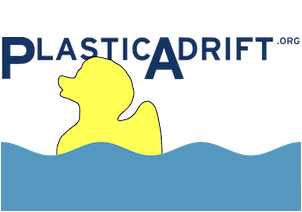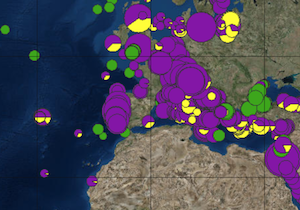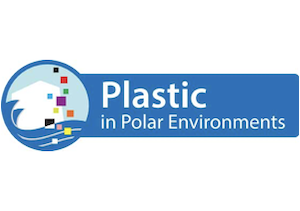Resources SCOR WG 153: FLOTSAM
Peer-reviewed articles from SCOR-FLOTSAM
Towards the Integrated Marine Debris Observing System
Maximenko, N, P Corradi, KL Law, E van Sebille, SP Garaba, RS Lampitt, F Galgani, V Martinez-Vicente, L Goddijn-Murphy, JM Veiga, RC Thompson, C Maes, D Moller, CR Löscher, AM Addamo, M Lamson, L Centurioni, N Posth, R Lumpkin, M Vinci, AM Martins, CD Pieper, A Isobe, G Hanke, M Edwards, IP Chubarenko, E Rodriguez, S Aliani, M Arias, GP Asner, A Brosich, JT Carlton, Y Chao, A-M Cook, A Cundy, TS Galloway, A Giorgetti, GJ Goni, Y Guichoux, BD Hardesty, N Holdsworth, L Lebreton, HA Leslie, I Macadam-Somer, T Mace, M Manuel, R Marsh, E Martinez, D Mayor, M Le Moigne, ME Molina Jack, MC Mowlem, RW Obbard, K Pabortsava, B Robberson, AE Rotaru, MT Spedicato, M Thiel, A Turra, and C Wilcox (2019), Frontiers in Marine Science, 6, 447[ Expand abstract] [ Link to article - ]
Plastics and other artificial materials pose new risks to health of the ocean. Anthropogenic debris travels across large distances and is ubiquitous in the water and on the shorelines, yet, observations of its sources, composition, pathways and distributions in the ocean are very sparse and inaccurate. Total amounts of plastics and other man-made debris in the ocean and on the shore, temporal trends in these amounts under exponentially increasing production, as well as degradation processes, vertical fluxes and time scales are largely unknown. Present ocean circulation models are not able to accurately simulate drift of debris because of its complex hydrodynamics. In this paper we discuss the structure of the future integrated marine debris observing system (IMDOS) that is required to provide long-term monitoring of the state of the anthropogenic pollution and support operational activities to mitigate impacts on the ecosystem and safety of maritime activity. The proposed observing system integrates remote sensing and in situ observations. Also, models are used to optimize the design of the system and, in turn, they will be gradually improved using the products of the system. Remote sensing technologies will provide spatially coherent coverage and consistent surveying time series at local to global scale. Optical sensors, including high-resolution imaging, multi- and hyperspectral, fluorescence, and Raman technologies, as well as SAR will be used to measure different types of debris. They will be implemented in a variety of platforms, from hand-held tools to ship-, buoy-, aircraft-, and satellite-based sensors. A network of in situ observations, including reports from volunteers, citizen scientists and ships of opportunity, will be developed to provide data for calibration/validation of remote sensors and to monitor the spread of plastic pollution and other marine debris. IMDOS will interact with other observing systems monitoring physical, chemical, and biological processes in the ocean and on shorelines as well as state of the ecosystem, maritime activities and safety, drift of sea ice, etc. The synthesized data will support innovative multi-disciplinary research and serve diverse community of users.
Measuring marine plastic debris from space: initial assessment of sampling requirements
Martínez-Vicente, V, J Clark, P Corradi, S Aliani, M Arias, M Bochow, G Bonnery, M Cole, A Cozar, R Donnelly, F Echevarria, F Galgani, SP Garaba, L Goddijn-Murphy, L Lebreton, HA Leslie, P Lindeque, N Maximenko, F Martin-Lauzer, D Moller, P Murphy, L Palombi, V Raimondi, J Reisser, L Romero, S Simis, S Sterckx, RC Thompson, KN Topouzelis, E van Sebille, JM Veiga, and D Vethaak (2019), Remote Sensing,, 11, 2443[ Expand abstract] [ Link to article - ]
Sustained observations are required to determine the marine plastic debris mass balance and to support effective policy for planning remedial action. However, observations currently remain scarce at the global scale. A satellite remote sensing system could make a substantial contribution to tackling this problem. Here, we make initial steps towards the potential design of such a remote sensing system by: (1) identifying the properties of marine plastic debris amenable to remote sensing methods and (2) highlighting the oceanic processes relevant to scientific questions about marine plastic debris. Remote sensing approaches are reviewed and matched to the optical properties of marine plastic debris and the relevant spatio-temporal scales of observation to identify challenges and opportunities in the field. Finally, steps needed to develop marine plastic debris detection by remote sensing platforms are proposed in terms of fundamental science as well as linkages to ongoing planning for satellite systems with similar observation requirements.
The physical oceanography of the transport of floating marine debris
van Sebille, E, S Aliani, KL Law, N Maximenko, JM Alsina, A Bagaev, M Bergmann, B Chapron, I Chubarenko, A Cózar, P Delandmeter, M Egger, B Fox-Kemper, SP Garaba, L Goddijn-Murphy, BD Hardesty, MJ Hoffman, A Isobe, CE Jongedijk, MLA Kaandorp, L Khatmullina, AA Koelmans, C Laufkötter, L Lebreton, D Lobelle, T Kukulka, C Maes, V Martinez-Vicente, MA Morales Maqueda, M Poulain-Zarcos, E Rodríguez, PG Ryan, AL Shanks, WJ Shim, G Suaria, M Thiel, TS van den Bremer, and D Wichmann (2020), Environmental Research Letters, 15, 023003[ Expand abstract] [ Link to article - ]
Marine plastic debris floating on the ocean surface is a major environmental problem. However, its distribution in the ocean is poorly mapped, and most of the plastic waste estimated to have entered the ocean from land is unaccounted for. Better understanding of how plastic debris is transported from coastal and marine sources is crucial to quantify and close the global inventory of marine plastics, which in turn represents critical information for mitigation or policy strategies. At the same time, plastic is a unique tracer that provides an opportunity to learn more about the physics and dynamics of our ocean across multiple scales, from the Ekman convergence in basin- scale gyres to individual waves in the surfzone. In this review, we comprehensively discuss what is known about the different processes that govern the transport of floating marine plastic debris in both the open ocean and the coastal zones, based on the published literature and referring to insights from neighbouring fields such as oil spill dispersion, marine safety recovery, plankton connectivity, and others. We discuss how measurements of marine plastics (both in situ and in the laboratory), remote sensing, and numerical simulations can elucidate these processes and their interactions across spatio-temporal scales.
Other publications and resources from SCOR-FLOTSAM
The summary of the first SCOR-FLOTSAM meeting has been published in the SCOR Newsletter #37.
The full report of the first SCOR-FLOTSAM meeting is available here.
Video about SCOR project during the Micro2020 conference


